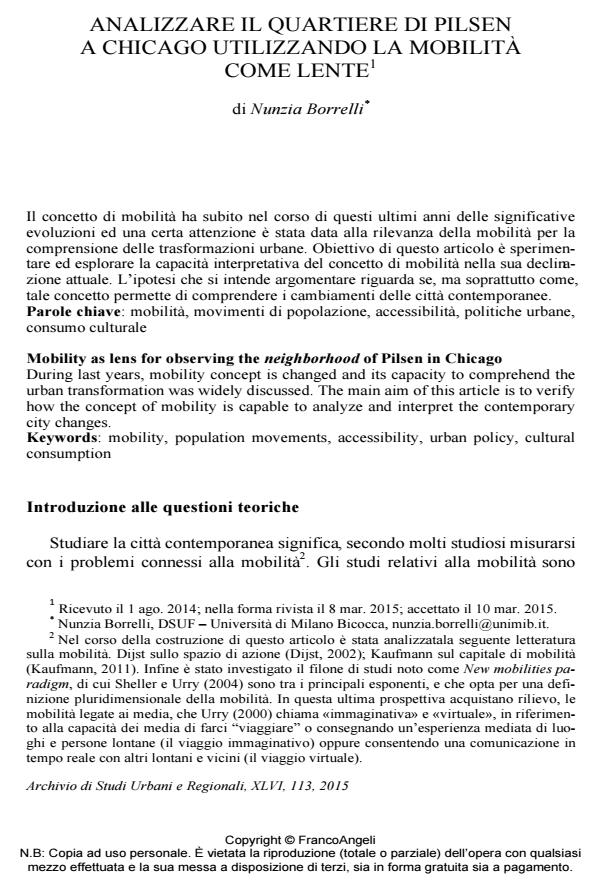Mobility as lens for observing the neighborhood of Pilsen in Chicago
Journal title ARCHIVIO DI STUDI URBANI E REGIONALI
Author/s Nunzia Borrelli
Publishing Year 2015 Issue 2015/113
Language Italian Pages 20 P. 103-122 File size 189 KB
DOI 10.3280/ASUR2015-113006
DOI is like a bar code for intellectual property: to have more infomation
click here
Below, you can see the article first page
If you want to buy this article in PDF format, you can do it, following the instructions to buy download credits

FrancoAngeli is member of Publishers International Linking Association, Inc (PILA), a not-for-profit association which run the CrossRef service enabling links to and from online scholarly content.
During last years, mobility concept is changed and its capacity to comprehend the urban transformation was widely discussed. The main aim of this article is to verify how the concept of mobility is capable to analyze and interpret the contemporary city changes.
Keywords: Mobility, population movements, accessibility, urban policy, cultural Consumption
Nunzia Borrelli, Analizzare il quartiere di pilsen a Chicago utilizzando la mobilità come lente in "ARCHIVIO DI STUDI URBANI E REGIONALI" 113/2015, pp 103-122, DOI: 10.3280/ASUR2015-113006